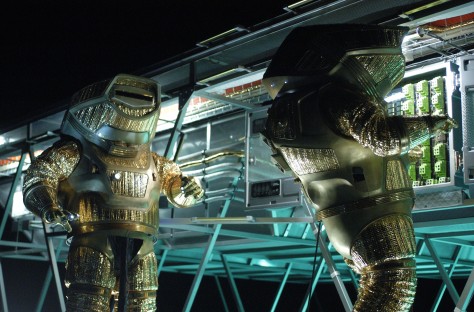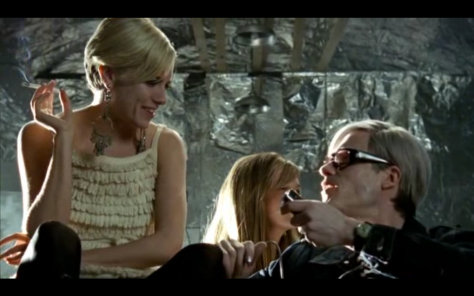By Dennis Hartley
(Originally posted on Digby’s Hullabaloo on October 20, 2007)

Alas and anon…just when you thought it was safe to assemble an armada and go back into the water, here comes another costumer concerning a certain virgin queen. Bollywood director Shekhar Kapur has re-enlisted Cate Blanchett and Geoffrey Rush for one more crack at the old girl in Elizabeth: The Golden Age. Picking up a few decades hence from where he left off in his 1998 film Elizabeth (which depicted her ascendancy) Kapur condenses a turbulent, historically significant 4-year period during Elizabeth’s reign into what appears to be a very eventful week in the life of HRM.
As the film opens, we are introduced to a much more wary and care-worn monarch (an alarmingly thin Blanchett) holding court over England’s destiny. Gone is the radiant, rosy-cheeked and free-spirited “Bess” who lit up the screen in the previous film; she has been replaced by a mercurial, slightly paranoid monarch constantly on guard against duplicitous well-wishers and sycophants. Even close confidants are kept at arm’s length, especially her Machiavellian “spymaster”, Sir Francis Walsingham (Rush).
The Queen has two big headaches keeping her on edge. The first is her cousin, Mary Stuart, Queen of Scotland (Samantha Morton, in a fiercely intense performance) who feels she is the rightful heir to the English throne, not the childless “bastard” Elizabeth (who is a Protestant to boot). Mary has some influential Catholic sympathizers at home and abroad, including the other royal pain in Elizabeth’s derriere, King Philip II of Spain (Jordi Molla), who gets his jollies jeering at the English queen and rattling his saber.
Elizabeth finds a temporary distraction from all her political woes when the dashing adventurer Sir Walter Raleigh (Clive Owen, in all his rangy glory) strolls into her court, full of tales and loaded with booty from his latest excursion to the New World. Elizabeth is obviously charmed, but has to suppress her schoolgirl crush for sake of appearances. However, when she learns that Raleigh has fathered a child and secretly eloped with her favorite chambermaid, Bess Throckmorton (Abbie Cornish) she is not so amused, and gives him a nice cozy jail cell to explore for a few years. Not to worry, however-history intervenes and the Queen pardons Raleigh in time to put him in charge of naval defenses in the year of the Armada (1588), which fuels the climactic (and rousing) battle scenes.
This is one of those “historical” epics where you have to make a decision going in whether you are going to nitpick and get cranky over odd factual inaccuracies and anachronisms, or just sit back and bask in the opulent pageantry and bodice-ripping court intrigue with a shit-eating grin on your face. Keep in mind, the screenplay is by William Nicholson, who scripted the (very) loose re-invention of the Camelot legend, First Knight, and Michael Hirst, who wrote for The Tudors, Showtime’s recent mini-series about the reign of Henry VIII. In other words, this ain’t Masterpiece Theater, folks.
Kapur seems indecisive; as if he wasn’t sure whether he wanted to make an updated version of Fire Over England (which depicted Elizabeth and Raleigh embroiled in court intrigue in the year of the Armada) or pay homage to The Sea Hawk (the swashbuckling action scenes featuring Owens in full Errol Flynn mode will definitely make history majors twitch). Nicholson and Hirst’s dialogue fuels some spirited exchanges between Blanchett and Owen in the first half of the film that reminded me of the clever repartee from Shakespeare in Love, but it ultimately clashes with some of the heavier moments later on (Samantha Morton nearly steals the movie in her execution scene, but it seems to belong in a different, darker-toned film).
If you are a genre fan, you’ll be pleased. Blanchett is excellent in the lead role, and Owen is charismatic as always. Rush is good, although his character is a bit one-dimensional (not his fault). One thing for sure-this should be the last of Liz the First for a while. Right? Tell me there isn’t another one in pre-production. Prithee (sp.?), tell me.











